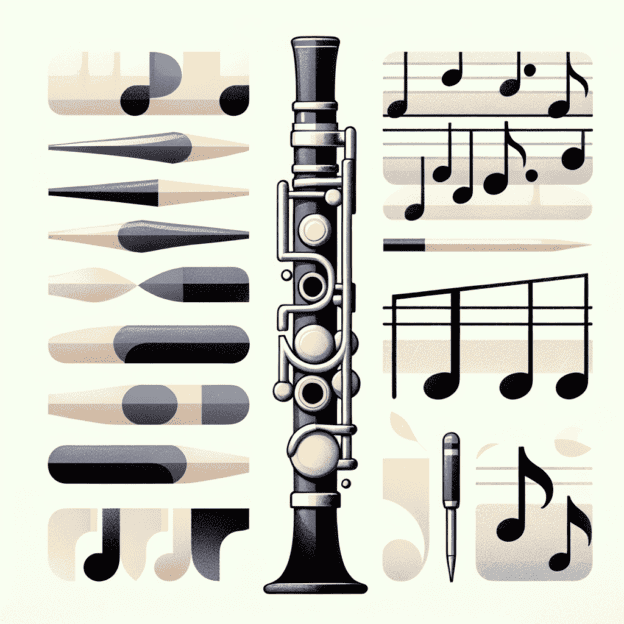The Impact of Clarinet Reed Strength on Intonation
Have you ever noticed how reed strength can significantly influence your sound on the clarinet? You play one day with a brand new reed, and everything seems to flow just right; then the next day, the exact same reed feels like a brick! It's a puzzling dance, isn't it? Understanding how clarinet reed strength impacts intonation is not only key for securing that sweet sound, but can also help you master your craft. Let's explore this topic together.
Understanding Reed Strength
First off, let's clarify what we mean by reed strength. Clarinet reeds are typically rated on a scale from 1 to 5 (or even higher), indicating how stiff or flexible a reed is. A higher number usually means a stronger reed, while a lower number indicates a softer one. Have you ever tried those super stiff reeds and felt like you were wrestling a bear? On the flip side, a softer one might feel like playing with a wet noodle! The real challenge lies in how these characteristics affect intonation.
Intonation is essentially how in-tune a note sounds. For clarinetists, it's a hot topic! We often grapple with which reed to choose based not just on preference, but on how it holds up against pitch accuracy. A stiffer reed can produce clearer and more pronounced notes, but it also demands more breath support. This means pushing harder, which could throw off your intonation—especially in the upper registers. Ever played a high note only to hear a wobbly sound creeping in? Yup, that struggle is all too familiar!
| Reed Strength | Characteristics | Impact on Intonation |
|---|---|---|
| Soft (1-2) | Easier to play, less breath support needed | Can bend more on high notes, potentially causing flat intonation |
| Medium (2.5-3.5) | Balanced response, moderate breath support | Generally good intonation across registers |
| Hard (4-5+) | More resistant, requires more breath support | Can produce sharper intonation, especially in lower register |
The Soft Side of Things
Now, let's dig a bit deeper. When playing softer reeds, you might find that you can produce sound with less effort, but there's a catch. Those reeds often tend to bend a bit more when playing higher pitches, making them trickier to control. That's just how it goes! Musicians aiming for a balanced tone will need to explore how their reed selection works with their playing style and the specific music they're tackling. This could be as simple as tweaking your breath support and pressure or trying out a different reed.
The Mouthpiece Connection
Next up is the relationship with the mouthpiece. The mouthpiece isn't just a chunk of plastic or metal; it's a key player in the setup! Pairing reed strength with the right mouthpiece can significantly affect intonation. It's like a perfect sandwich combo—you need both parts to hit the spot! The way the reed vibrates against the mouthpiece opening influences how the sound travels through your instrument. If your mouthpiece doesn't play nice with your reed's strength, you might find yourself huffing and puffing to keep your notes in check.
Reed Material Matters
But there's more to consider! The material your reed is made from also affects performance. Traditional cane reeds tend to be more forgiving than synthetic ones, but this also varies with strength. Each player has unique needs, so it's worth trying different options! How else will you find that perfect match for your clarinet? Don't be afraid to mix things up—the discovery phase is often where clarinetists truly find their sound.
Keeping Your Reeds in Shape
Maintenance is another factor we shouldn't overlook. Once you've found a reed strength that feels right, proper care can greatly affect its lifespan and tonal quality. Storing reeds in a moisture-controlled case, rotating them regularly, or even prepping them slightly before a performance can help ensure that your strength levels match the intonation you're aiming for.
Your Clarinet Matters Too
And let's not forget about your choice of clarinet. The craftsmanship of brands like Martin Freres can enhance your overall performance in subtle yet noticeable ways. While any quality instrument should work well, a well-made clarinet tends to resonate better with your reed choices, offering a richer tone across the board. Their design promotes clarity in higher notes, which is great for those who prefer stronger reeds!
Finding Your Sweet Spot
So, after considering all these factors, here's a handy tip: if you find yourself constantly straining for higher notes and struggling with pitch, it might be time to rethink your reed strength. This doesn't mean ditching your favorite reed; rather, it's about becoming more aware of how your choices affect your playing. This awareness can give you more freedom to express yourself musically.
Wrapping It Up
As players, we need to tune in to our own sounds and pay attention to how our equipment behaves. Getting to know the relationship between clarinet reed strength and intonation can really boost your performance. Keep experimenting with different reed strengths and chat with other clarinetists about their experiences. Here's to smooth notes and fantastic performances!







